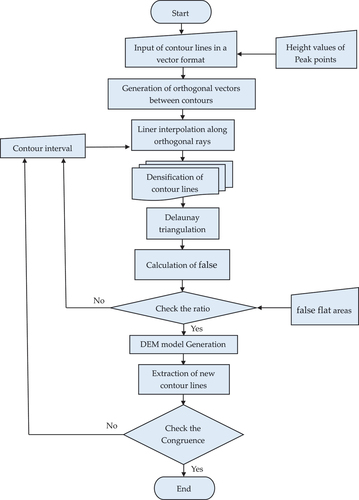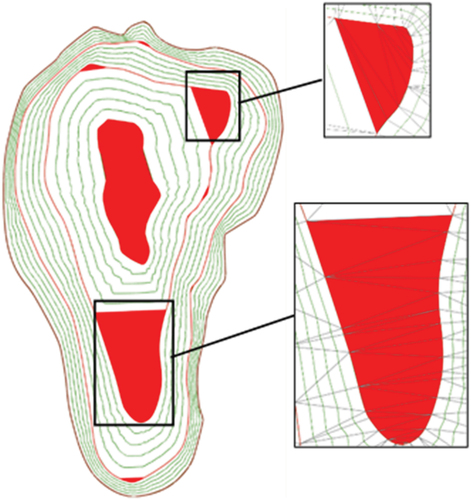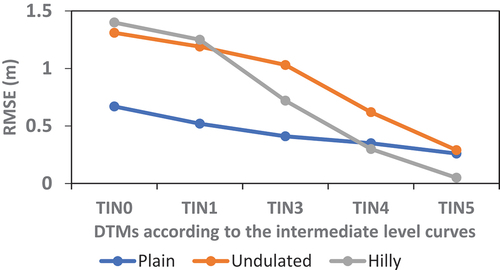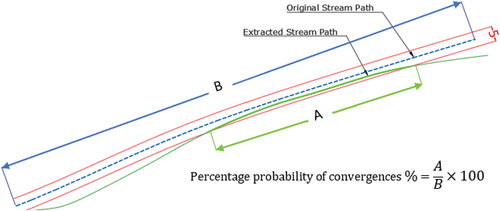Figures & data
Figure 1. (a) Level curves projected in a horizontal plane; (b) curve of steepest slope(James Citation2017).
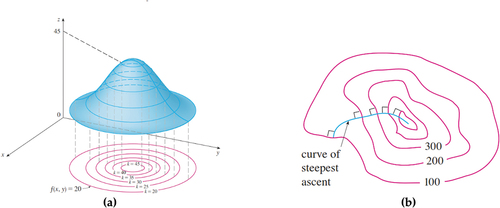
Figure 2. (a) Slopes of tangent lines on the surface; (b) the vertical plane passes through the direction of unit vector (James Citation2017).
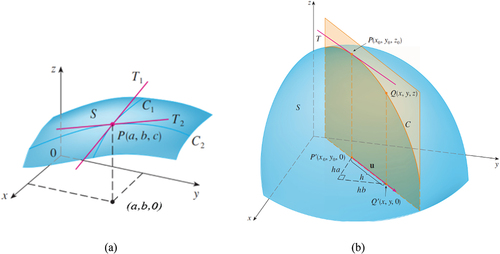
Figure 3. Gradient vector and tangent to the level curve are orthogonal vectors (James Citation2017).
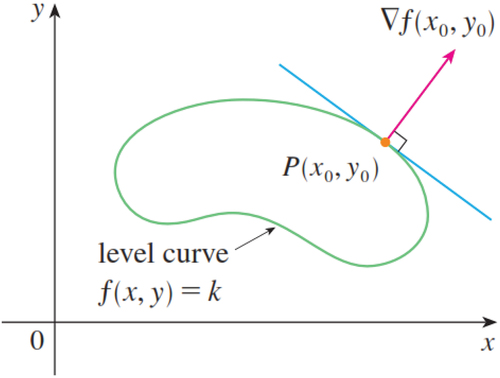
Figure 6. (a) The Orthogonal vectors based on four adopted methods (CAOV, CDOV, IAOV, IDOV) from left to right, (b) The intermediate contour lines extracted by linear interpolation along orthogonal vectors, (c) The new contour lines generated from TIN Models and the area in red color of false flat area, and (d) the symmetric differences between intermediate contour lines and newly generated contour lines.
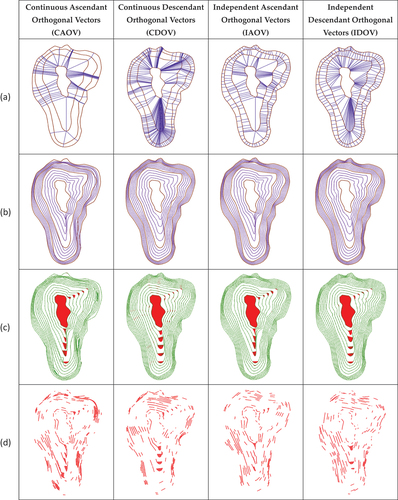
Table 1. Comparison between the statistics of tested methods.
Figure 7. (a) The densification of level curves 0.5 m vertical interval,causing the generation of TIN model with 1.34% of false flat area (red regions), and (b) The densification of level curves 0.25 m vertical interval reduces the false flat area to 0.9%.
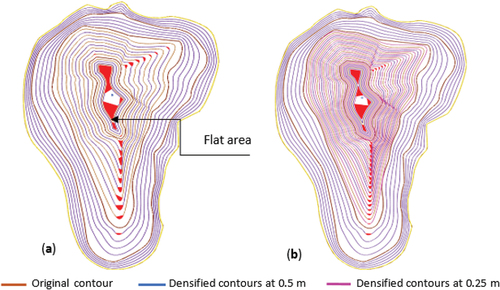
Figure 8. The examination samples of the study area according to three characteristic terrain locations, scale 1:25,000.
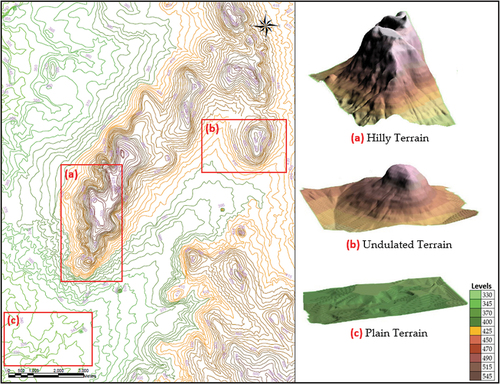
Table 2. The precisions of TIN models.
Table 3. The geomorphometric parameters of DEMs and their statistics.
Figure 10. Slope maps (a), (c), and (e) derived from DEM4, (b), (d), and (f) derived from TOPO raster DEM.
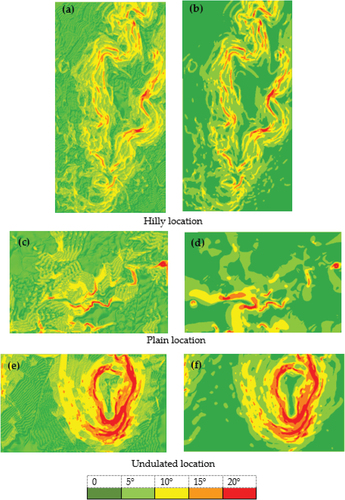
Figure 11. Curvature maps (a), (c), and (e) derived from DEM4, (b), (d), and (f) derived from TOPO raster DEM.
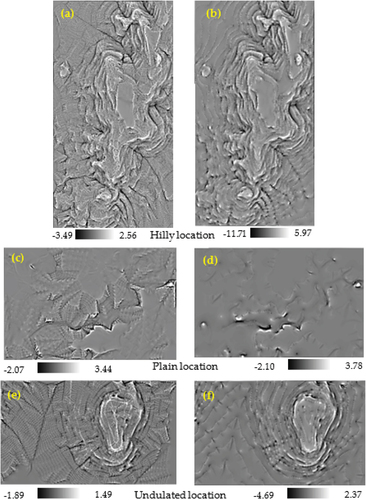
Figure 12. Aspect maps (a), (c), and (e) derived from DEM4, (b), (d), and (f) derived from TOPO raster DEM.
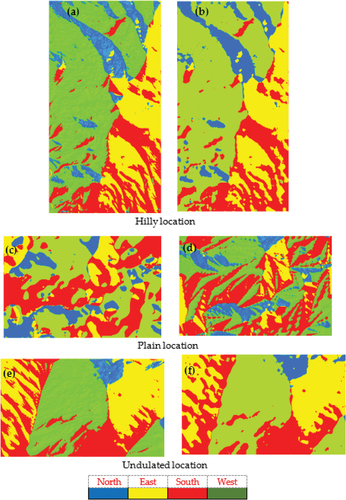
Figure 13. Spatial distribution of elevational changes between DEM4 and TOPO raster DEM (a) Hilly location; (b) Undulated location; and (c) plain location.
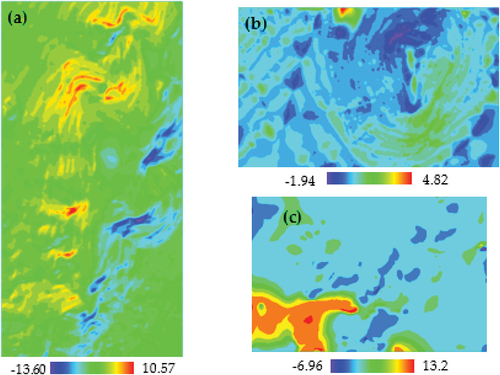
Figure 14. Comparison between original contour lines (brown color) and the generated ones (red color) from the extracted DEMs of the three types of terrain, line of maximum slope (blue color).
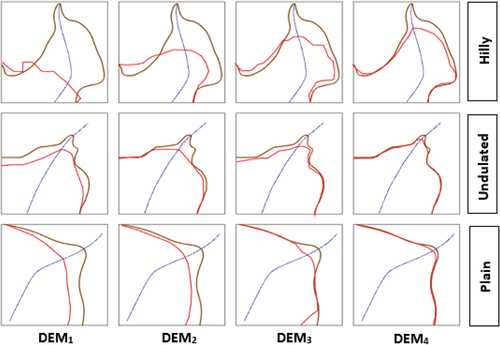
Table 4. Percentage probability of convergences between extracted and original stream paths.
Figure 16. The convergence probability between extracted and original stream paths as the increase of the intermediate contour lines.

Data availability statement
The data that support the findings of this study are available from the corresponding author, upon reasonable request.

